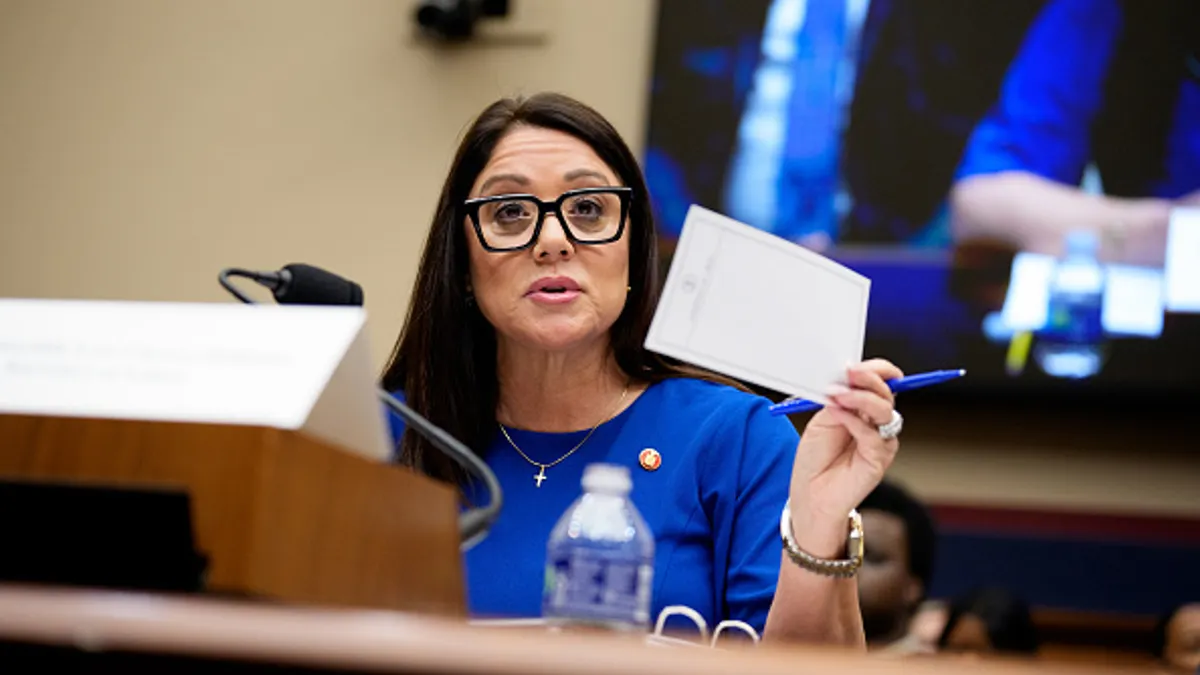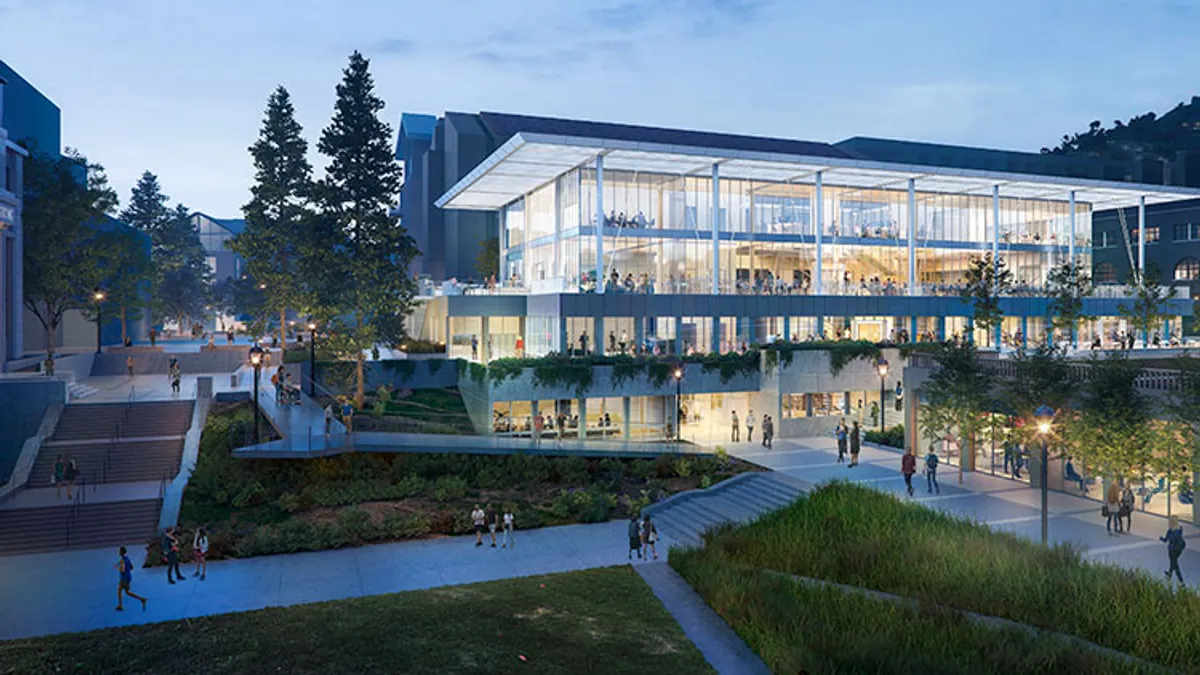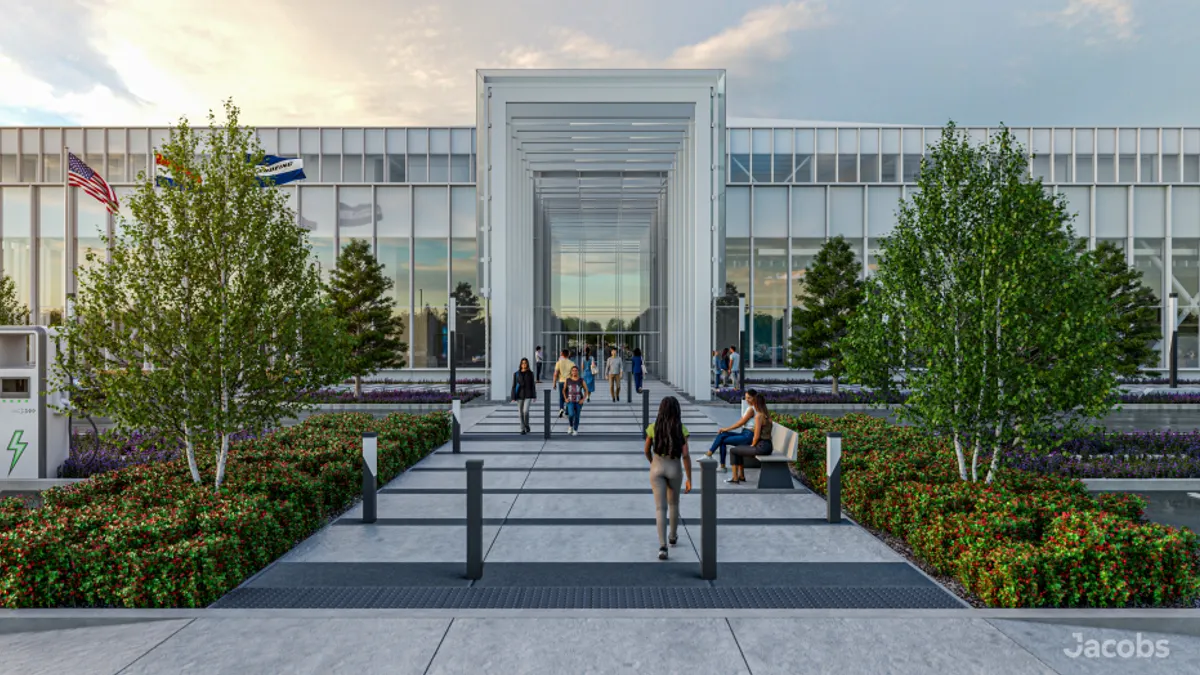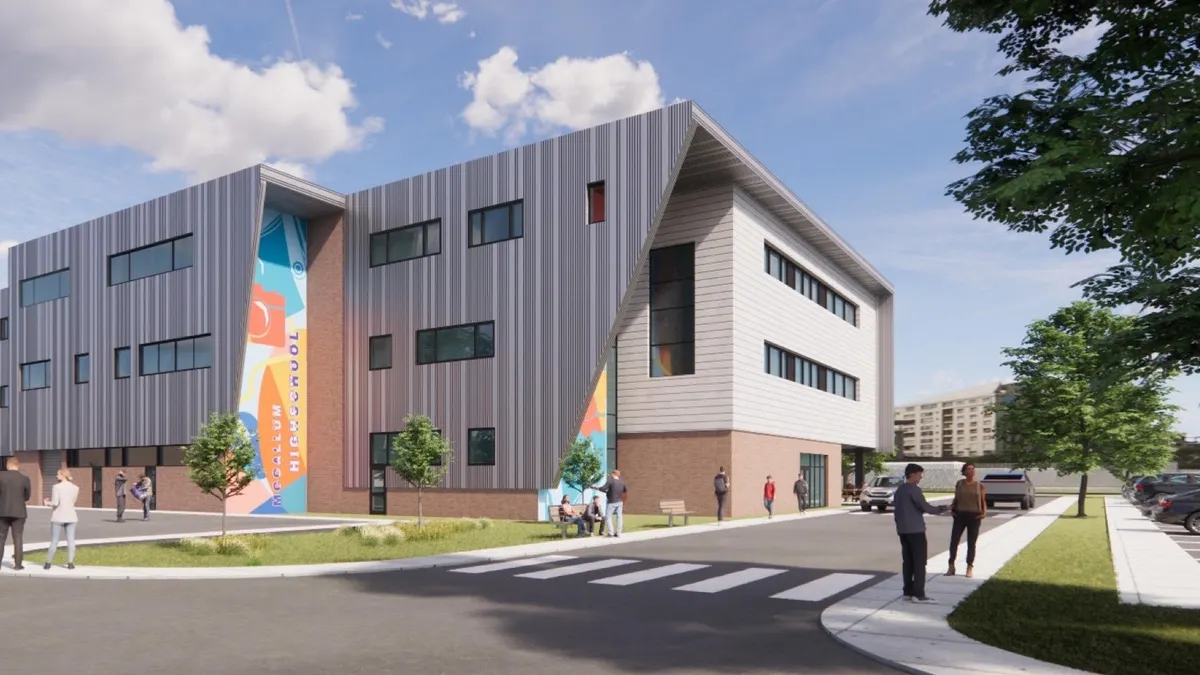The construction industry has been dealing with its "elephant in the room" — or the skilled labor shortage — for years, and the conversation is getting louder as stakeholders search for solutions to the issue crippling stronger growth in the sector.
During HomeAdvisor's Insights Forum Friday, expert panelists addressed the complicated circumstances surrounding the labor shortage, as well as possible solutions. But as John Courson, president and CEO of the Home Builders Institute, noted, "We're sort of preaching to the choir here." The panelists said the conversation needs to advance beyond the industry to reach the general media, officials and others who can help drive significant change.
The current workforce situation
Between April 2006 and January 2011, the construction industry eliminated more than 40% of its work force, cutting nearly 2.3 million jobs. And most of those workers haven't returned. Companies are also struggling to attract millennial workers to careers in the trades that the aging workforce will soon leave behind. Industry groups have consistently warned that the construction industry needs to develop a plan to build up the worker pipeline.
In a September Associated General Contractors of America survey, 86% of contractors across the U.S. reported they were struggling to fill hourly craft jobs or salaried professional positions.
"This is the number one issue for our contractor members," AGC CEO Stephen Sandherr said during the forum. "It's not just at the craft level. It's superintendents, estimators, etc."
And earlier this year, a HomeAdvisor survey found that 93% of industry respondents said the labor shortage is preventing their businesses from growing over the next year. Although half of respondents plan to hire one or more skilled workers in the next year, 76% said they believe it will be hard to find new employees.
Aside from the effect on construction companies, ramifications of the labor shortage have reached far into other sectors of the economy, including housing.
Jonathan Smoke, chief economist at Realtor.com, said the top issue standing in the way of potential homeowners purchasing a property is their inability to find a home that is affordable or one that meets their needs. This severe lack of inventory has pushed up home prices and priced many first-time buyers out of the market.
"New construction is always the escape valve when there's tight inventory," Smoke said during the forum. "There's no question we're not producing enough."
He added that when builders are asked why they aren't constructing more homes to keep up with demand, they almost always cite the availability and cost of labor. And, even more concerning, most expect the situation to get worse. "That is the obvious elephant in the room," he said.
Major factors contributing to the labor shortage
Lack of young people
The labor shortage conversation has been largely dominated by one issue: the lack of young people entering the industry. During the recession, the workers who fled the industry were disproportionately younger. "You had a complete exodus of people under 50," Smoke said.
Now, millennials often seek careers in the hot technology sector, even when they might earn a higher wage in construction, according to CNBC real estate reporter Diana Olick.
"When you look at the tech sector and young people's expectations, the Googles of this world … are just packed to the gills with 20-something workers making less than they would on the construction site, but thinking this is their ticket to being Mark Zuckerberg," she said.
Tara Sinclair, chief economist at Indeed.com, said one of the main obstacles to attracting millennial workers is the heightened pressure for young people to obtain a college degree, even if that isn't the best option for certain students. "People are making those career path plans at a very young age and aren't necessarily exploring those career options that might be a better fit for them… They're looking for long-term career paths. I think we want to show them it's not just a one-time thing," she said.
Misconceptions of careers in the trades
Along with the issue of reaching young people is the growing perception that careers in the trades aren't as respected as white-collar jobs, the panelists noted.
"As a society, we have denigrated the nobility of the trades," Chris Terrill, CEO of HomeAdvisor, said. "Why shouldn't the trades be a good place to go? I think there's a perception that some of the trades is backbreaking. A huge part of it is using your mind. There are a lot of misperceptions."
Sandherr said those misconceptions are entrenched among students, parents and educators. "It's a cultural issue," he said. "There are few parents who think, 'I'd love if my kid would grow up to become a carpenter.' Our education system is skewed toward focusing kids toward college."
Mark Richardson, senior industry fellow with Harvard's Joint Center for Housing Studies, added that the U.S. is "a country where it's all about moving to that next level. We've got a culture here so focused on the promised land. The promised land is not to be a skilled worker."
Dearth of women workers
The panelists also discussed the other major demographic void in the construction trades: women. Denise Dersin, editorial director for Professional Builder magazine, noted that women represent only 2.9% of trade workers in the U.S. "For women in the industry, they don't hear this could be interesting for them. They don't think about it being something they can think about doing," she said. "But there is work for these women. Women need to be encouraged to do this. This is a large population of people who could do this work."
However, the panelists added that there are factors holding women back from seeking jobs in the trades, including a lack of female mentors and role models in leadership positions, as well as harassment concerns on the job site.
Sandherr said some construction crews tend to have a "little bit of a high school locker room mentality" that could reach "borderline harassment." He said the AGC has tried to work with construction companies to help them understand the importance of creating a welcoming atmosphere for all workers.
Declining immigration
The U.S. construction industry has lost 570,000 Mexican-born workers since 2007, according to a September John Burns Real Estate Consulting report. A significant portion of the workers who returned to Mexico during the housing crisis have not come back to the U.S. due to heightened immigration controls and more job opportunities in Mexico, the report found.
In addition, a Zillow report last month found that 67.1% of surveyed housing experts believe construction labor costs will go up due to the decline of undocumented immigration in the U.S. In the survey, 30% of respondents cited the dwindling numbers of undocumented immigrants as the cause of the lack of inventory.
"During the recession, thousands of workers left the field or left the country," Olick said. "We all know illegal labor was a big part of the construction industry. They don't appear to be coming back. Is there something in immigration policy that should change that could bring back these workers?"
Sandherr added that immigration is one of the biggest problems contributing to the labor shortage. "You have a significant percentage of the industry that are foreign-born or may have come here illegally … We need to have some type of legal status for these people." He added that, due to workers' undocumented status, some employers are taking advantage of those workers, who are unable to report instances of misclassification or unfair wages.
Possible solutions
Marketing
Panelists cited marketing efforts as one of the main methods that could combat the dearth of workers. "Homebuilders should get out there and market to young people," Olick said. "Say that it's technology, that it could be as glamorous as a tech job. There are a million great stories of innovation in construction. (Homebuilders are) so busy marketing to buyers, and especially millennial buyers. They should be interested in getting millennials interested in (jobs in) housing."
An obstacle hindering that kind of effort involves tackling some of the negative attitudes surrounding careers in the trades as well as the housing industry. "We’re talking about a marketing challenge around perception," said John McManus, editorial director of Hanley Wood’s Residential Group.
Sinclair suggested that wage increases for labor positions, as well as greater emphasis on opportunities for advancement in the industry, are crucial to reaching the elusive younger generation. The industry should try to "make housing cool" and "sell the idea that building something actually means something," she said.
She added that, due to the popularity of HGTV with women, marketing on that television channel could be an effective method for reaching potential women workers.
Smoke said he would like to see homebuilders and construction companies make pitches for shop classes in schools in the same way that musicians and the entertainment industry pitch the benefits of music classes. "A little bit of marketing can go a long way," he said. "A lot of people just think there's not an opportunity for them."
Education and training
Greater focus on educational initiatives and training programs could also make a major difference in the labor shortage, the panelists said.
Dersin noted that the U.S. has lost thousands of apprenticeship programs in the last decade. She suggested that states should focus on enhancing vocational training programs. "There has to be some institutional change to get new schools," she said.
Courson said his company has discovered the initiatives "have to be local." HBI has taken its pre-apprenticeship training program into secondary schools, and can then place the majority of those students immediately into the workforce after graduation.
"In terms of our education system, what are we doing in terms of where resources are being shifted?" said Ed DeMarco, senior fellow in residence with the Milken Institute's Center for Financial Markets. "There's such an emphasis on college prep and testing. It's shifted from vocational training and other skill development that took place in high schools a generation ago."
Immigration reform
Immigration policy has been a major topic of debate during the presidential race this year, and the panelists said it will have a direct impact on the labor shortage.
"Immigration could be the quick fix here," Dersin said. "If we could get temporary guest worker programs to get people who come in and out of the country to be able to go home, that would be huge."
Sandherr added that with immigration reform and a way to obtain legal status, these workers would be able to report instances of misclassification and unfair pay without the fear of deportation or legal recourse. That ability could then encourage others to enter the industry. "One of the ways to attract people and keep them in the industry is to pay them a decent wage," he said.
SEE ALSO: How construction executives can embrace diversity in an evolving workforce
Collaboration toward a common goal
The panelists said that, with all of these individual solutions that could help remedy the labor crisis, two broader tactics could have a significant impact: collaboration and action.
"The industry will have to recognize that you just can't complain about it, you have to do something about it," Sandherr said.
Courson said that, ideally, he would like to see the trade groups, construction companies, advocacy organizations, and all other stakeholders affected by the labor shortage join together to "form a grand coalition or collaboration to push this issue forward with legislators at all levels."
"No one of us can do it by ourselves. The need certainly is there," Courson said. "Who can be the catalyst to put this grand collaboration together so we can … carry this message forward? That's my vision, if we could ever pull that off."



















